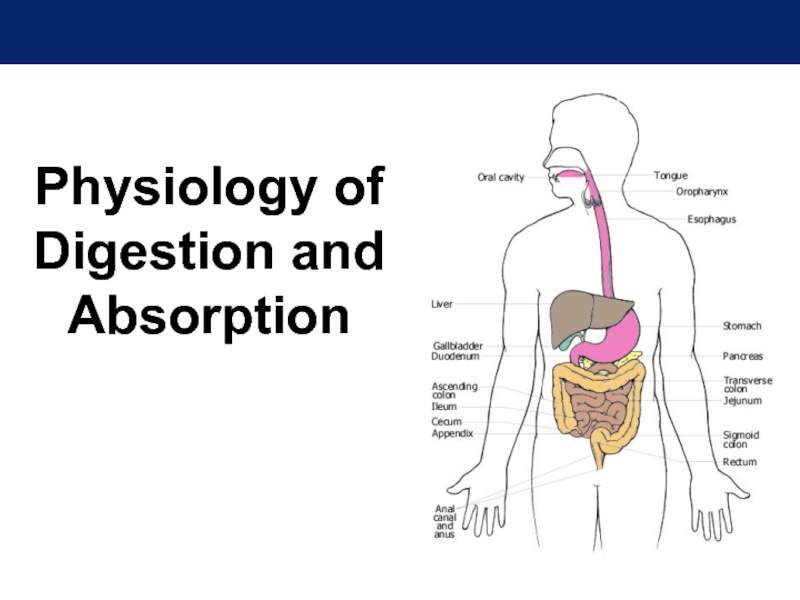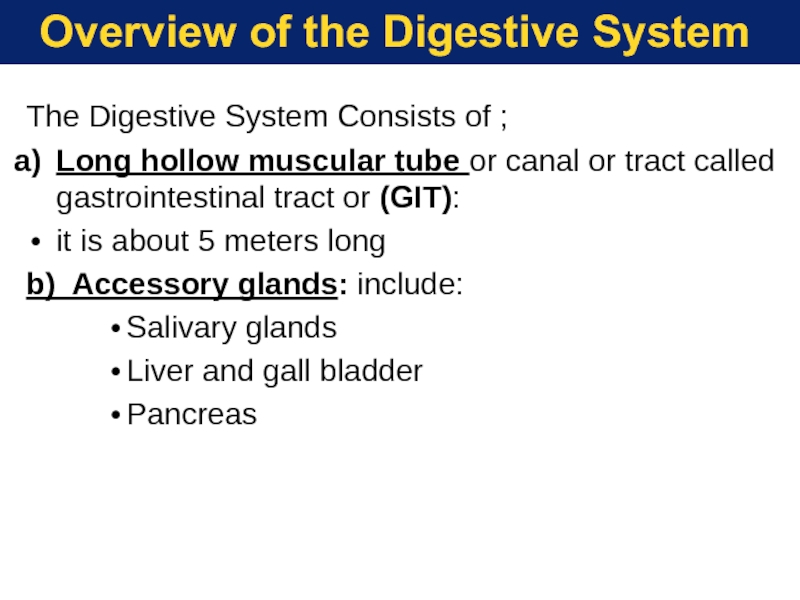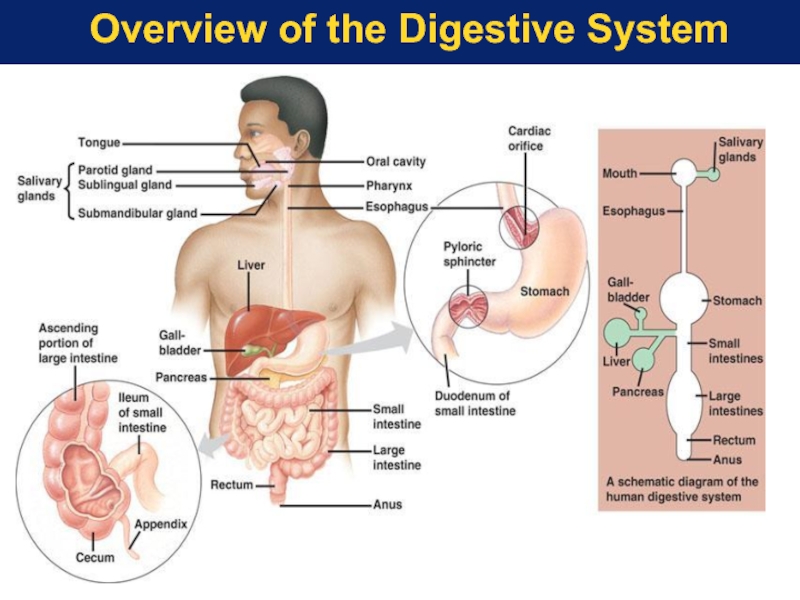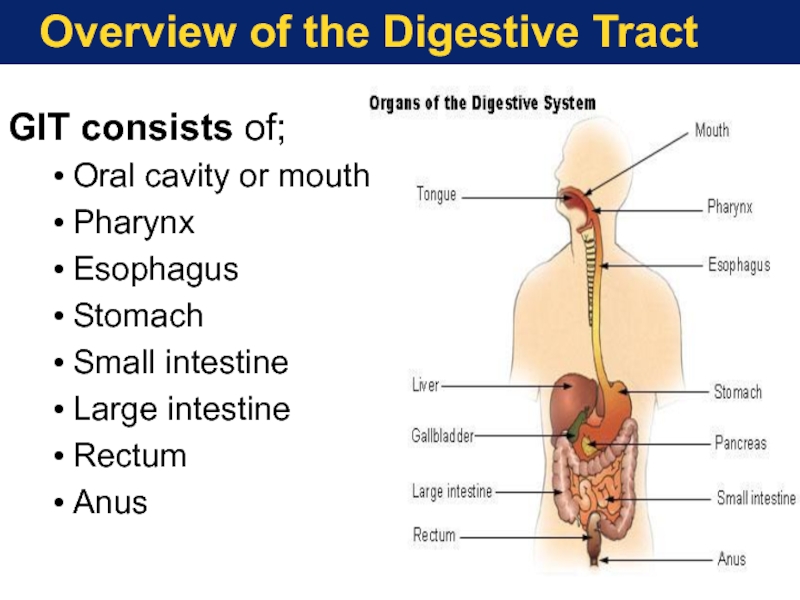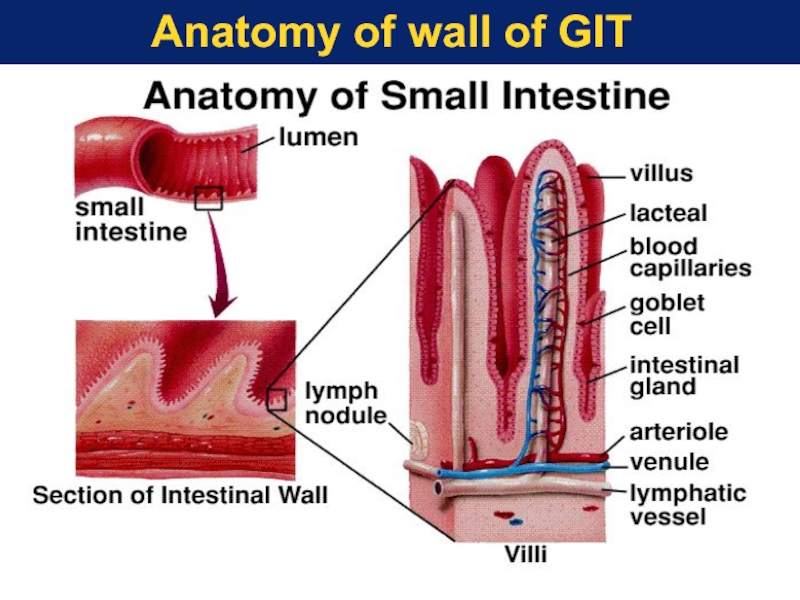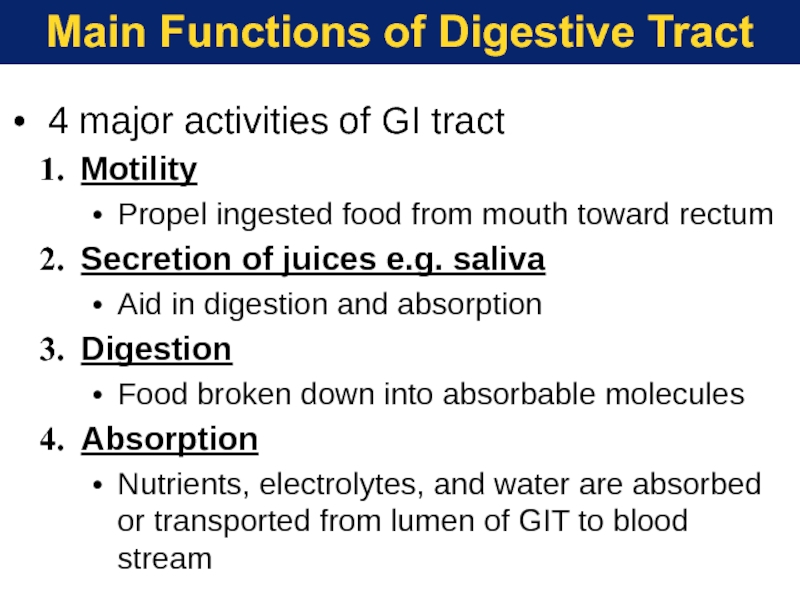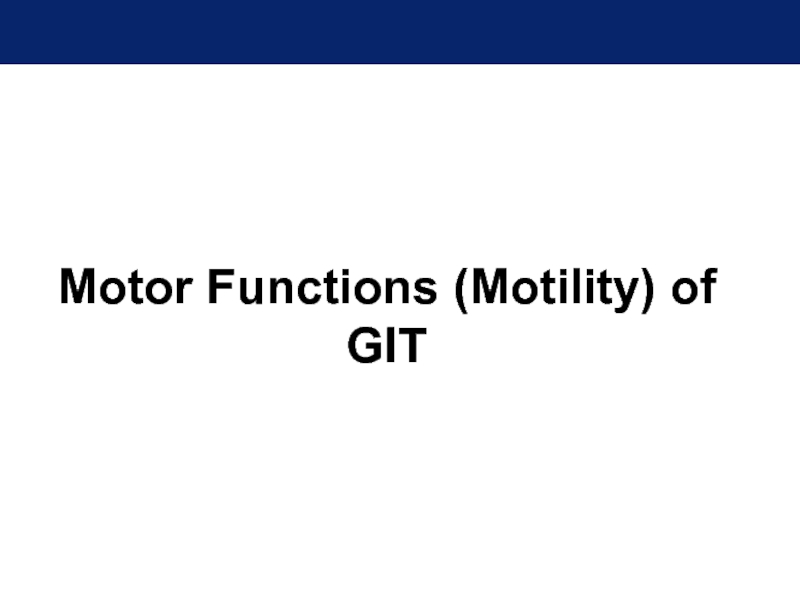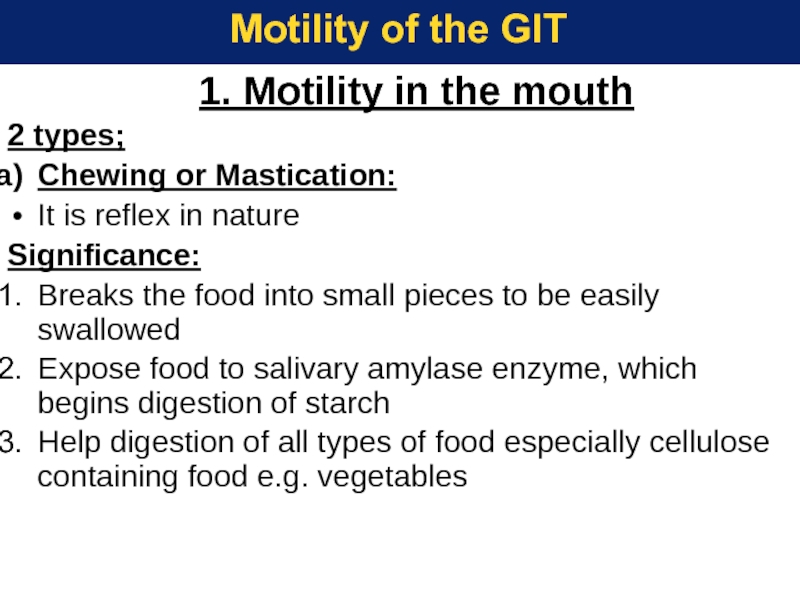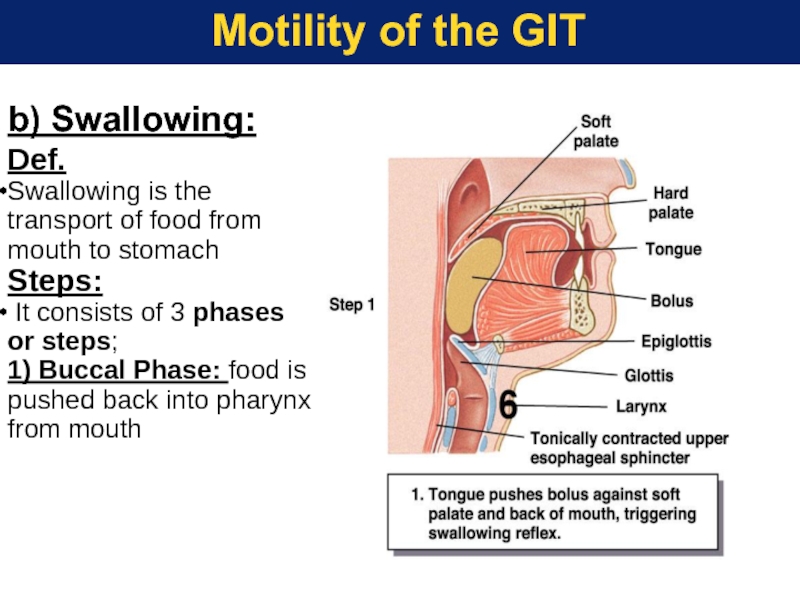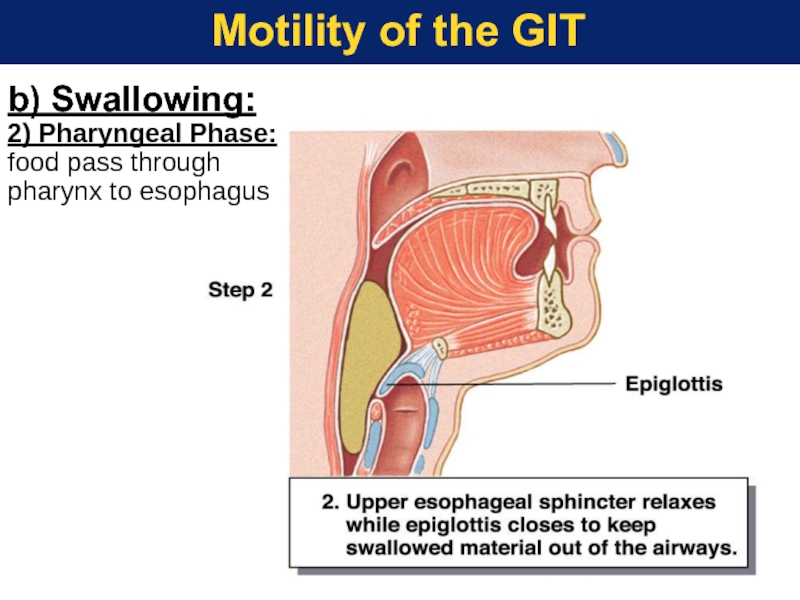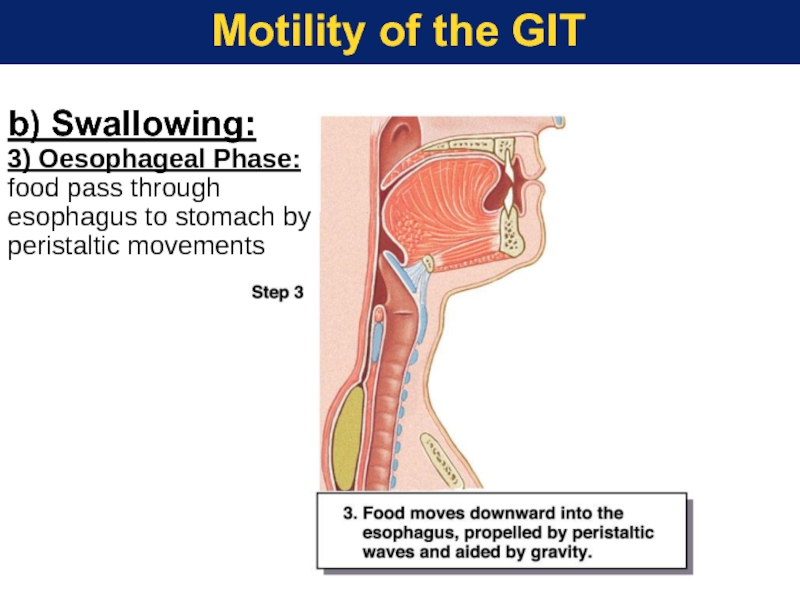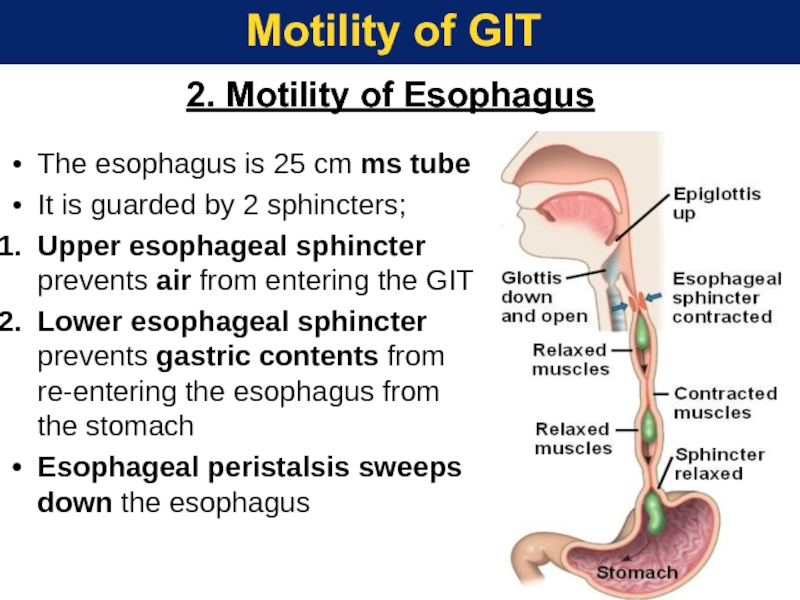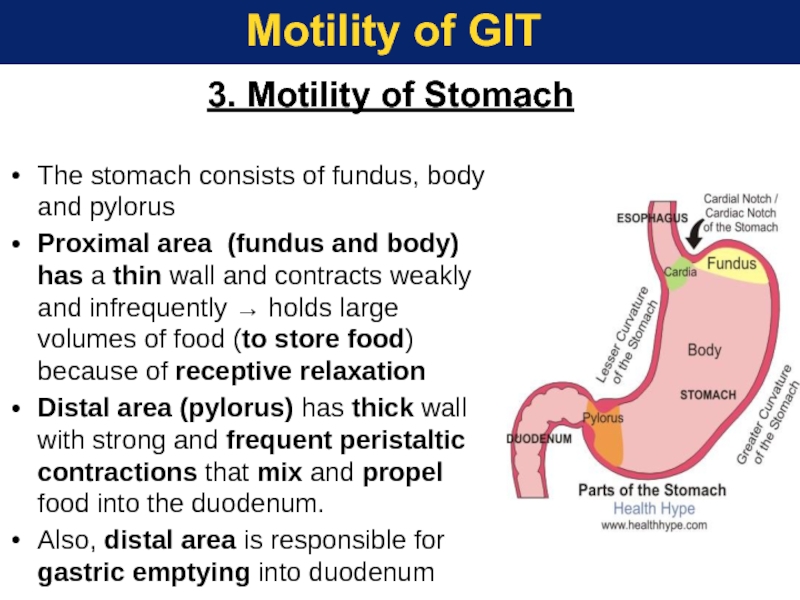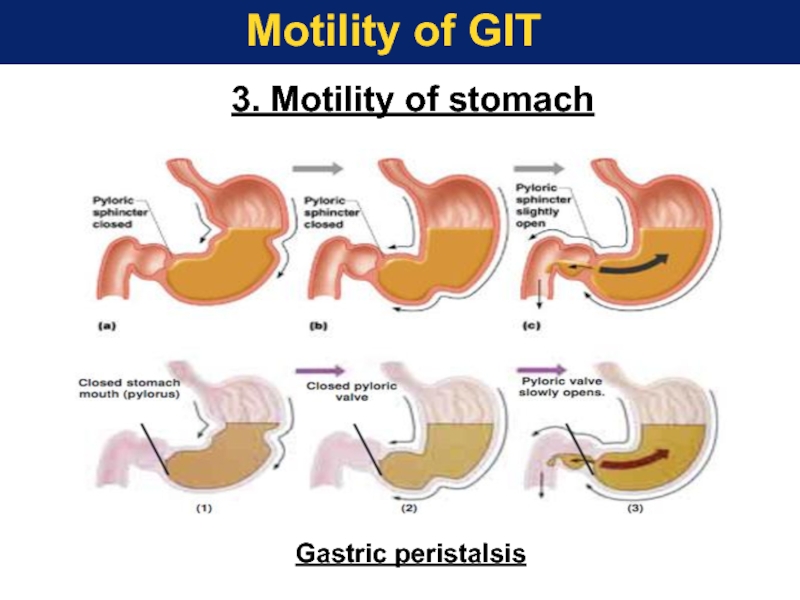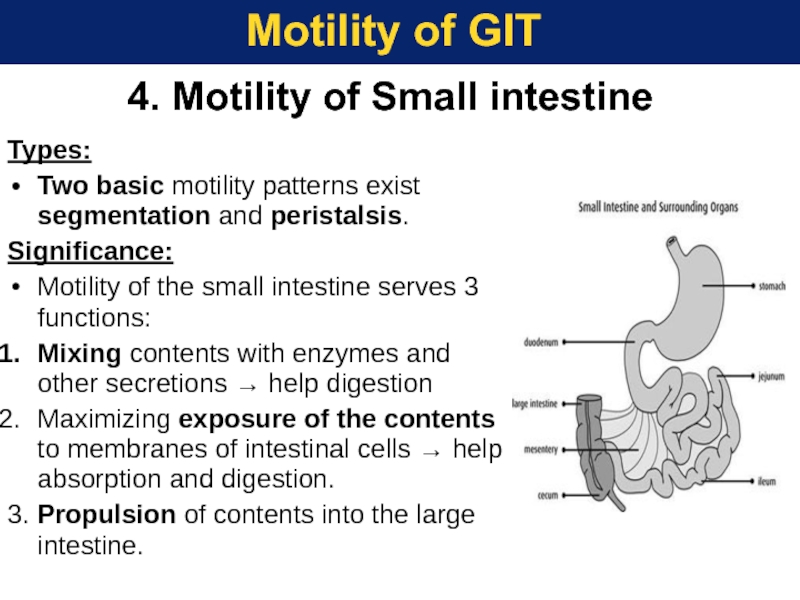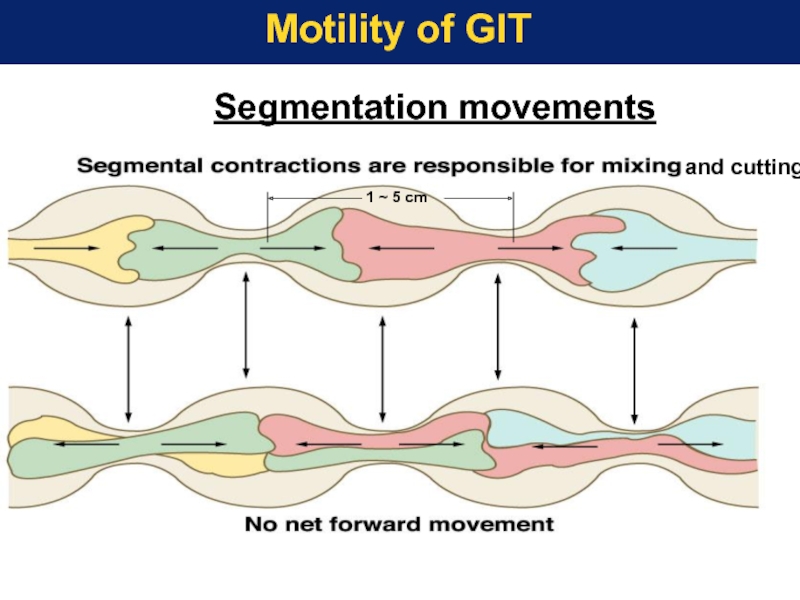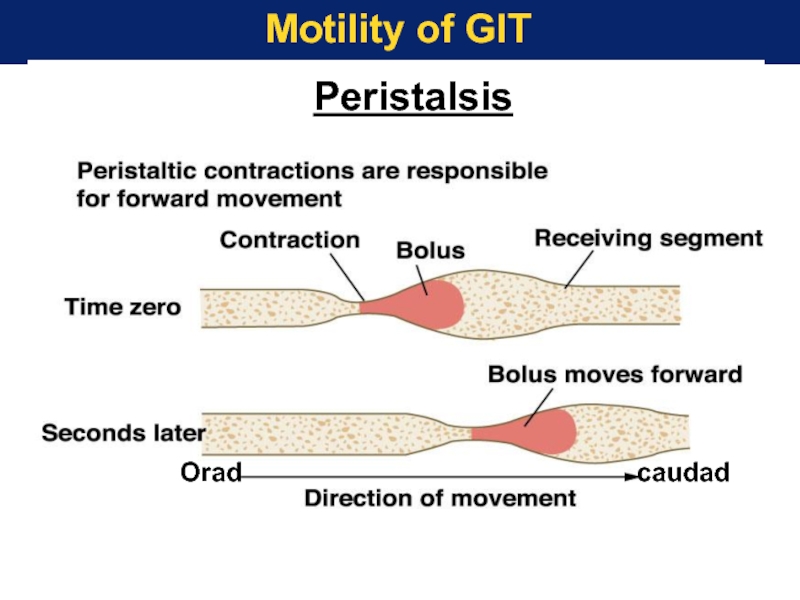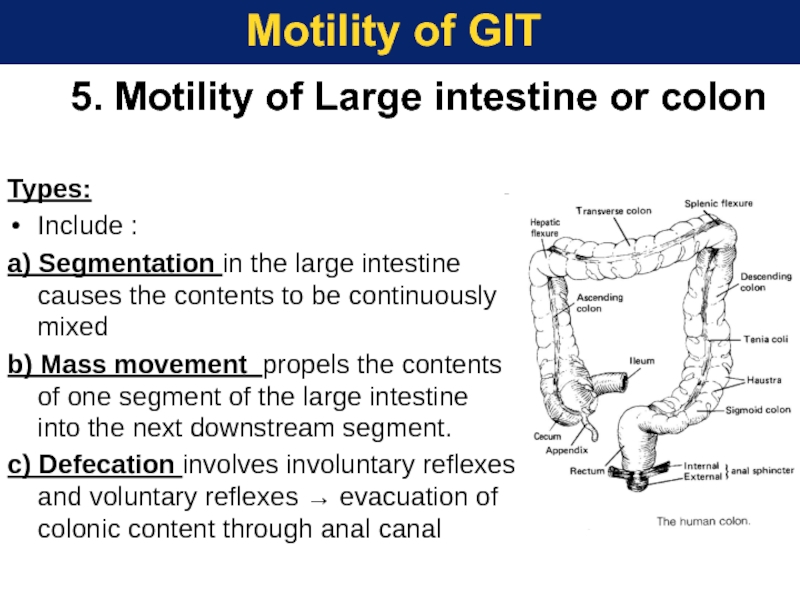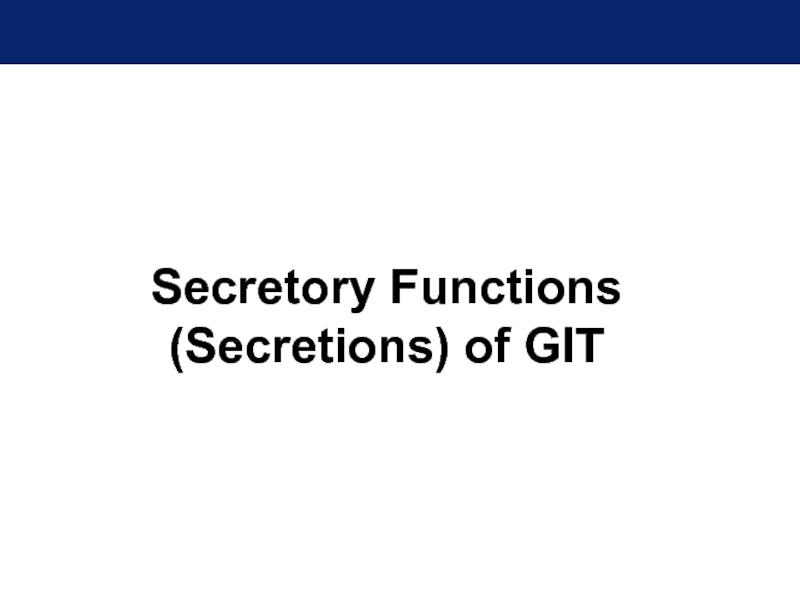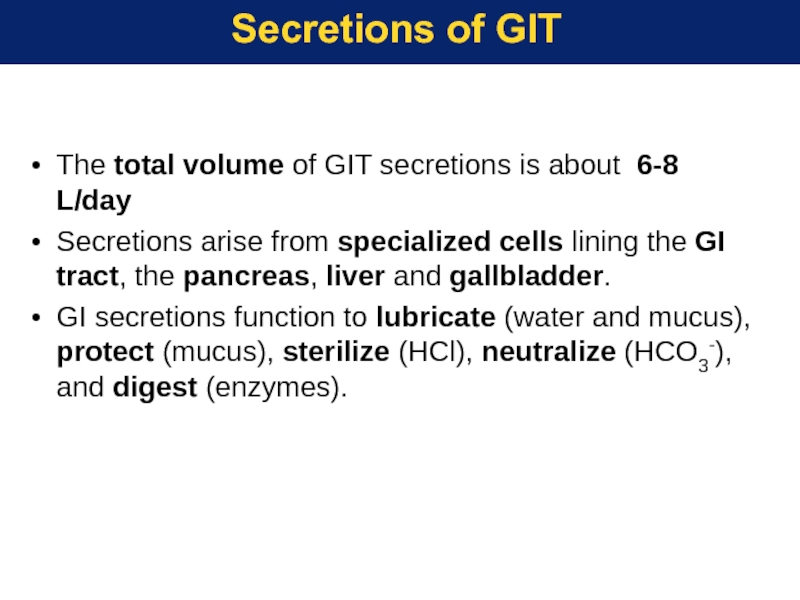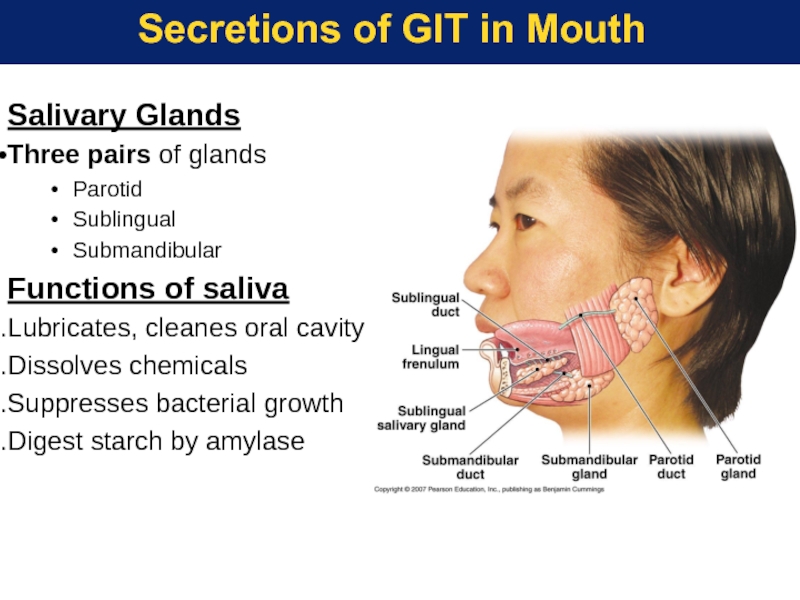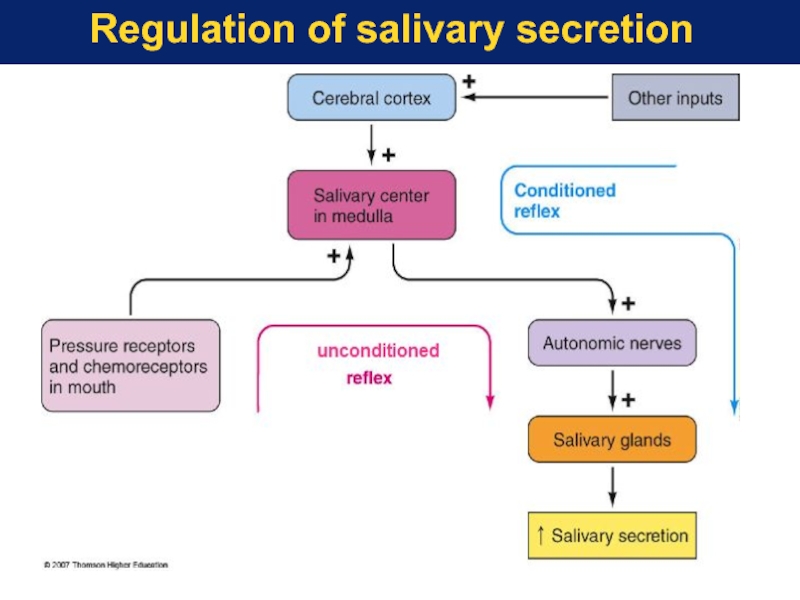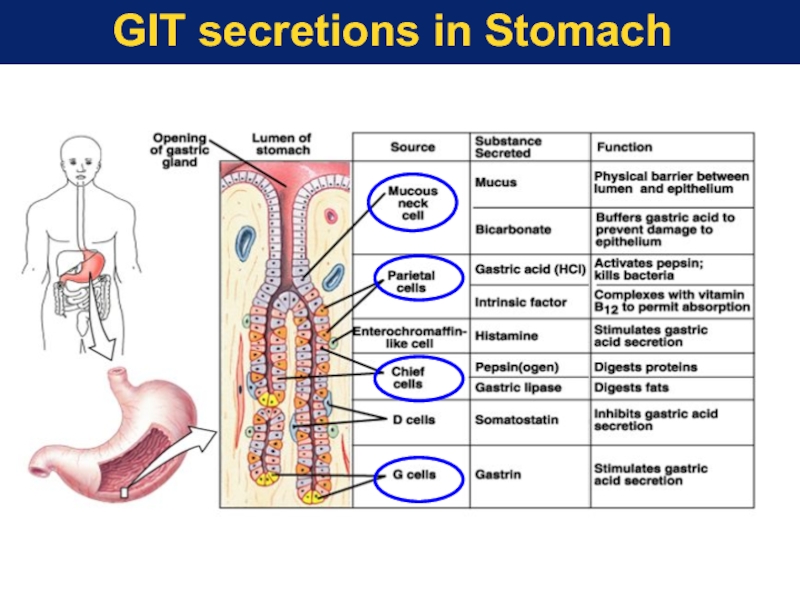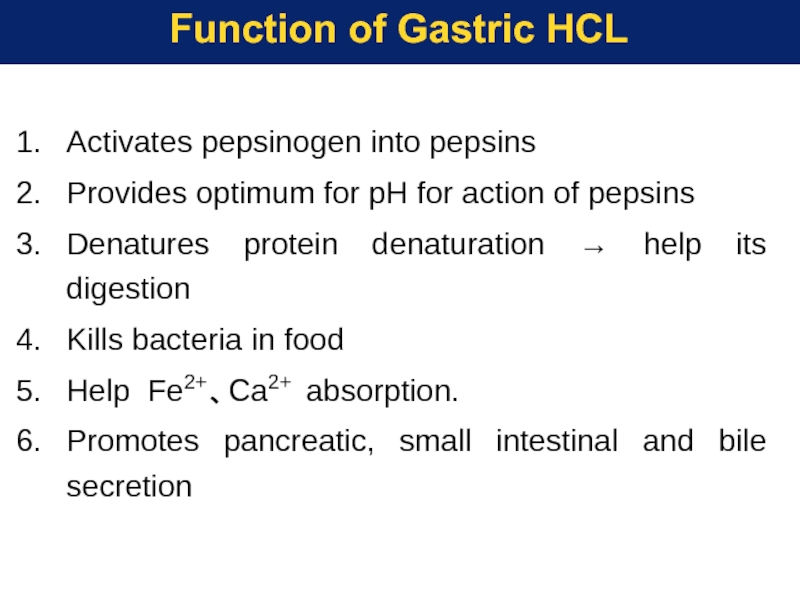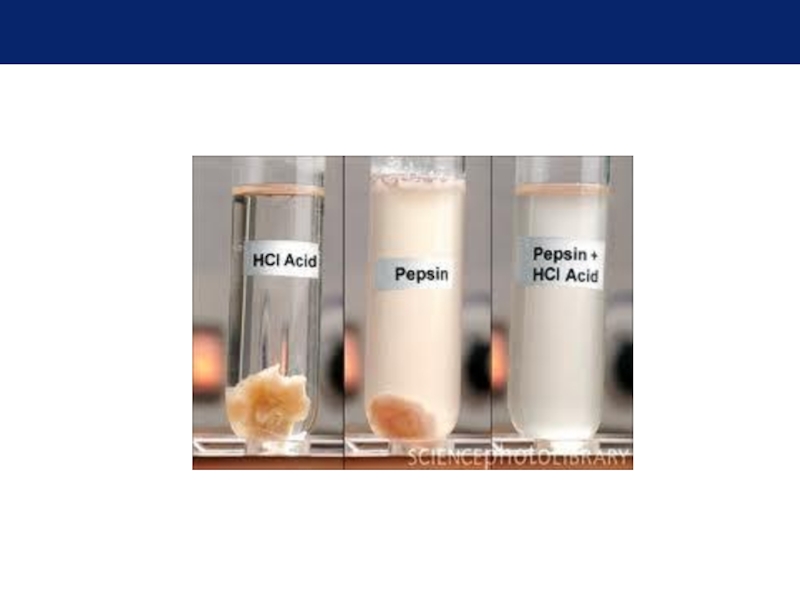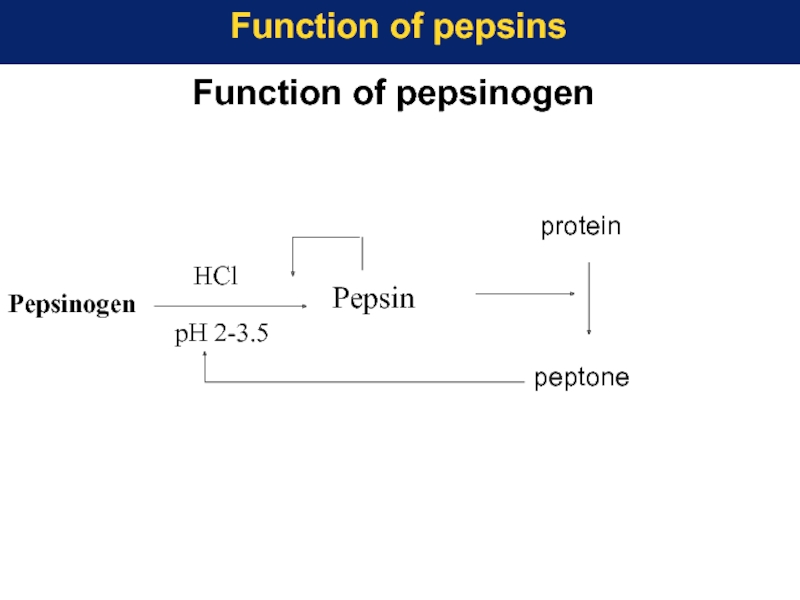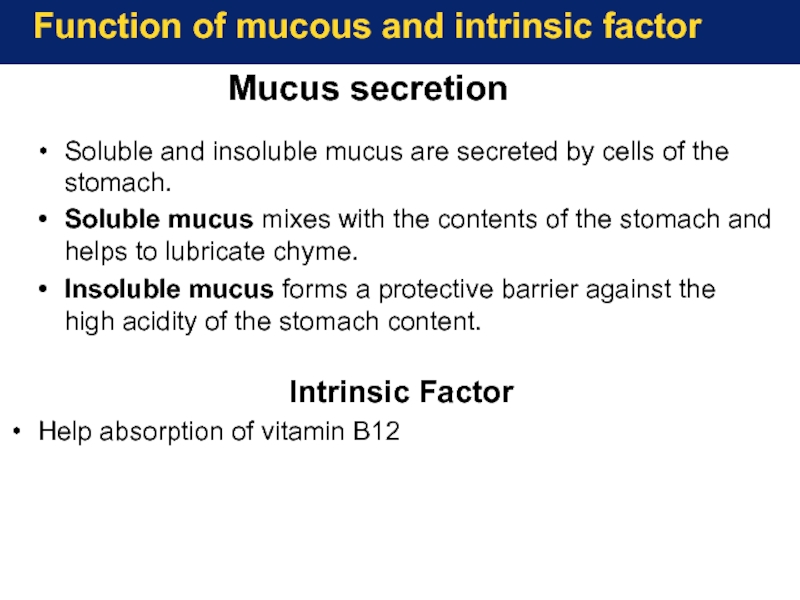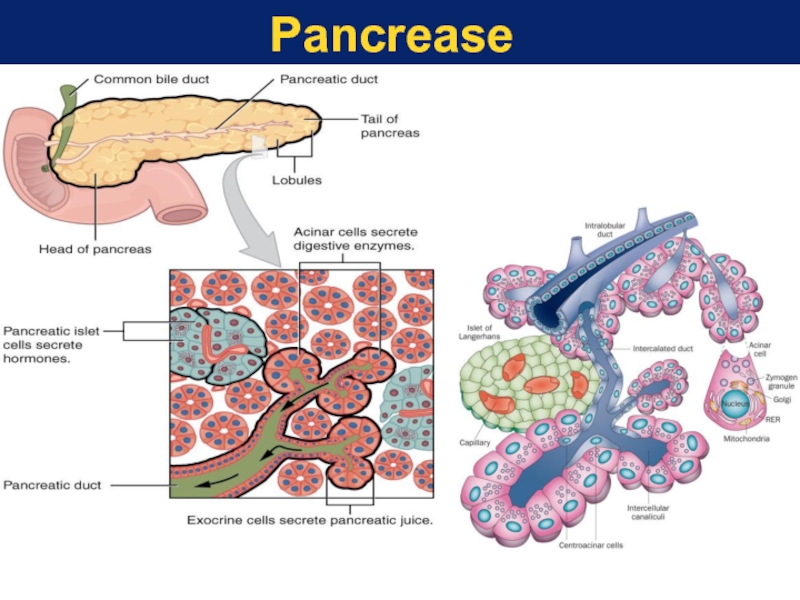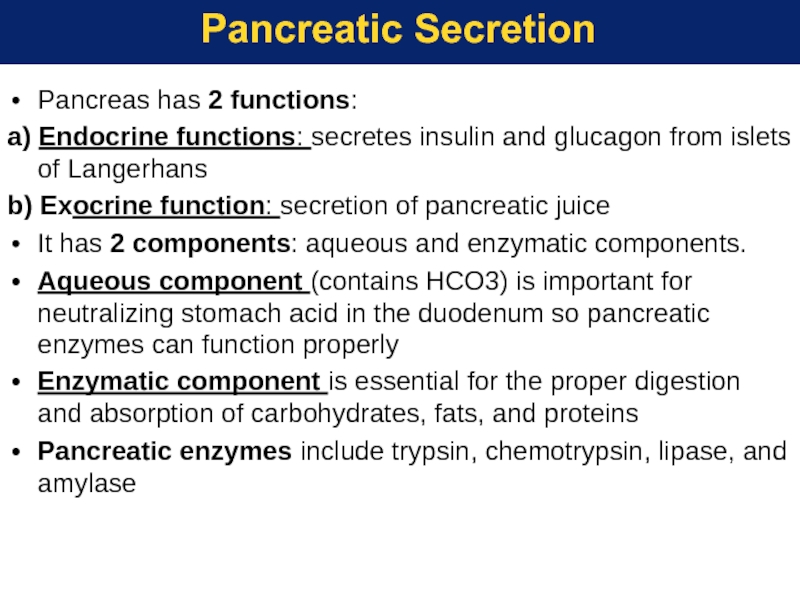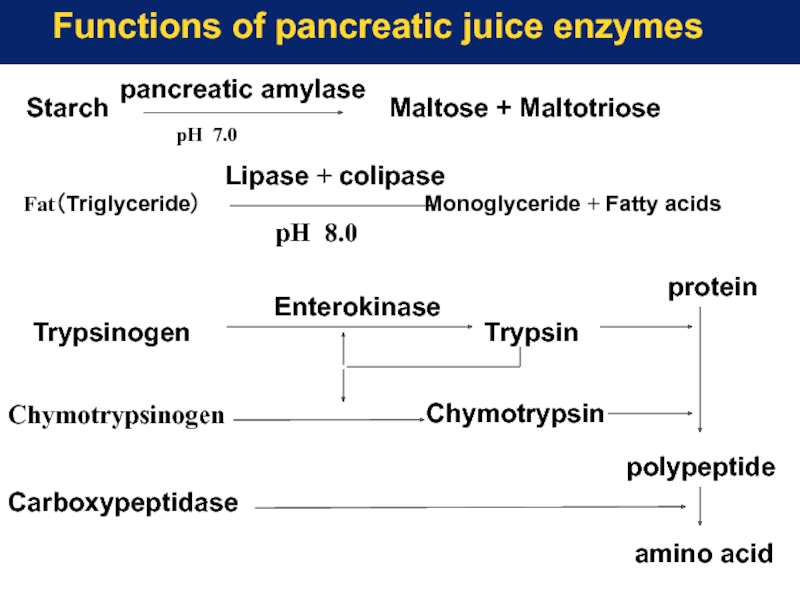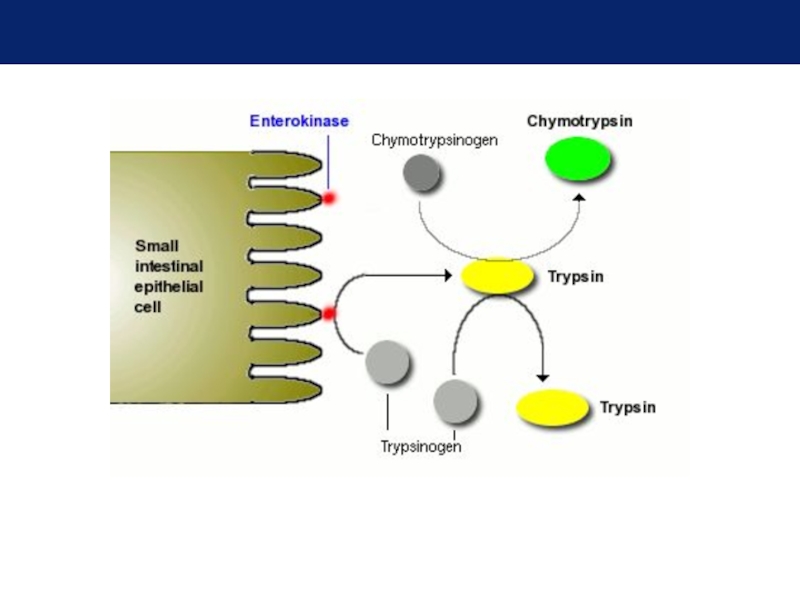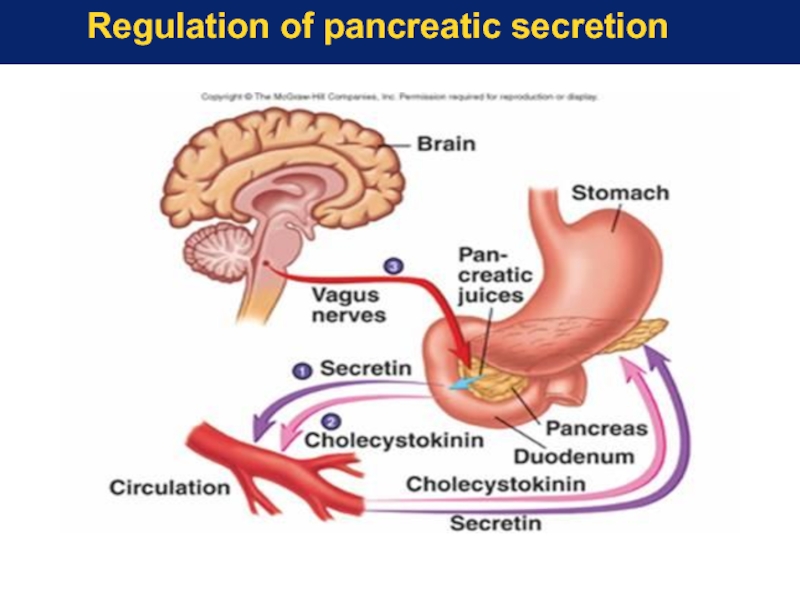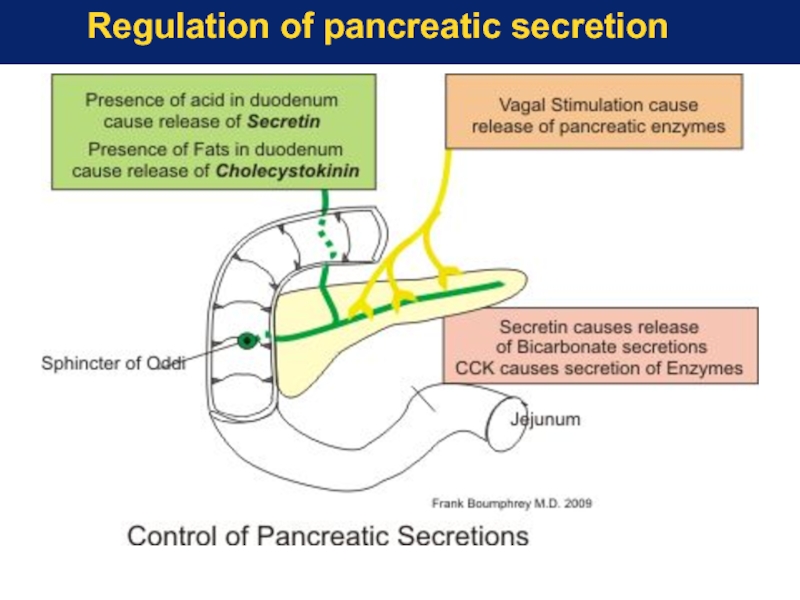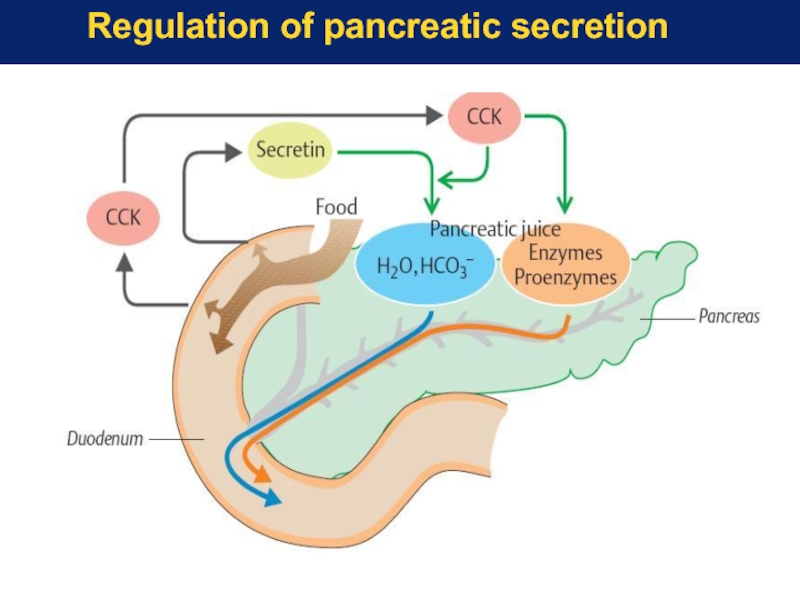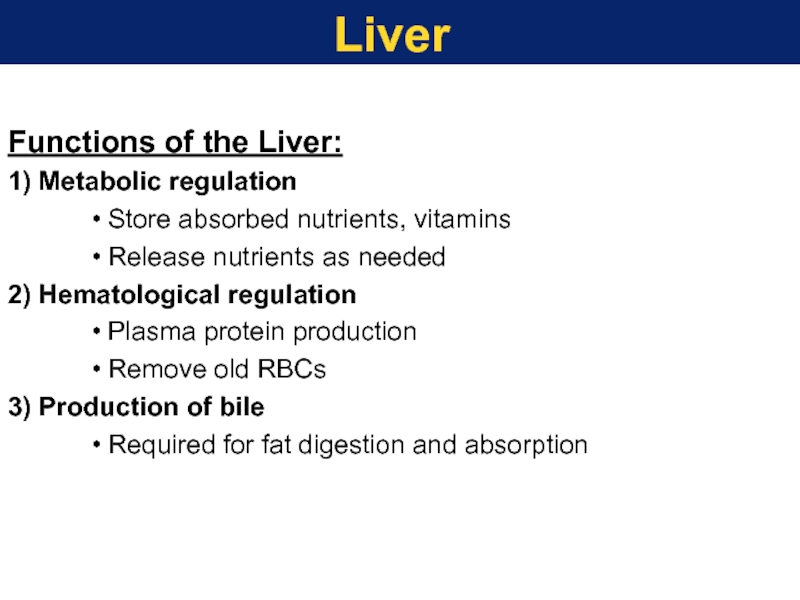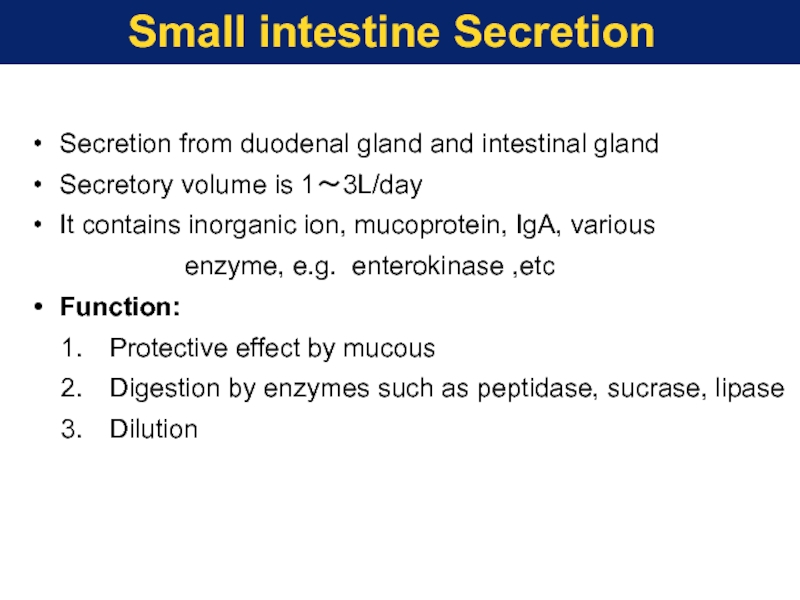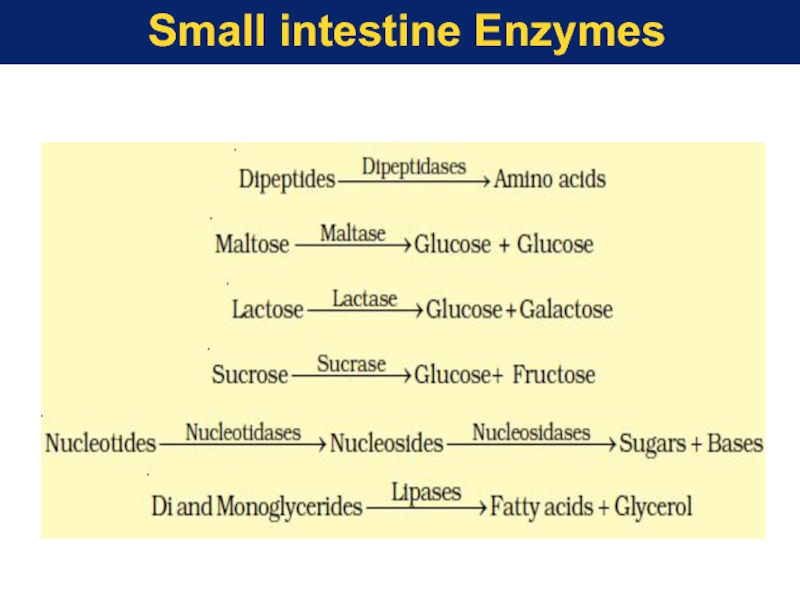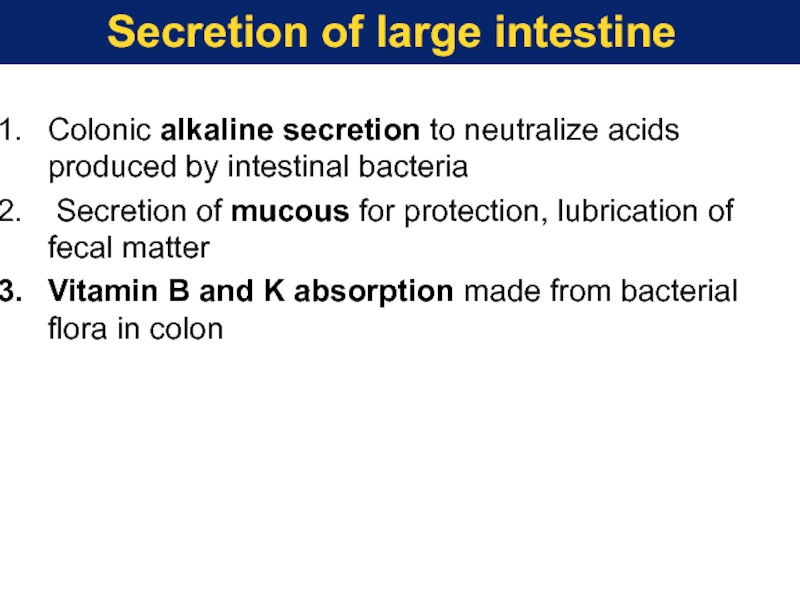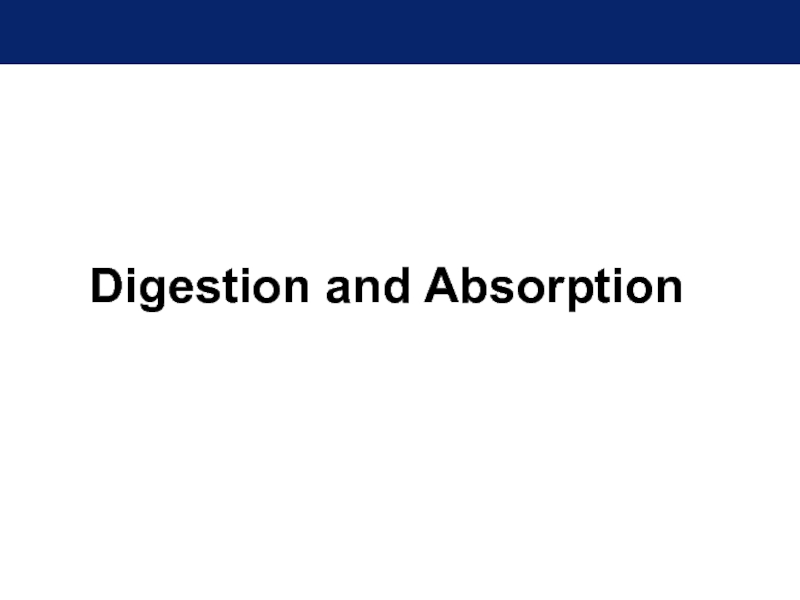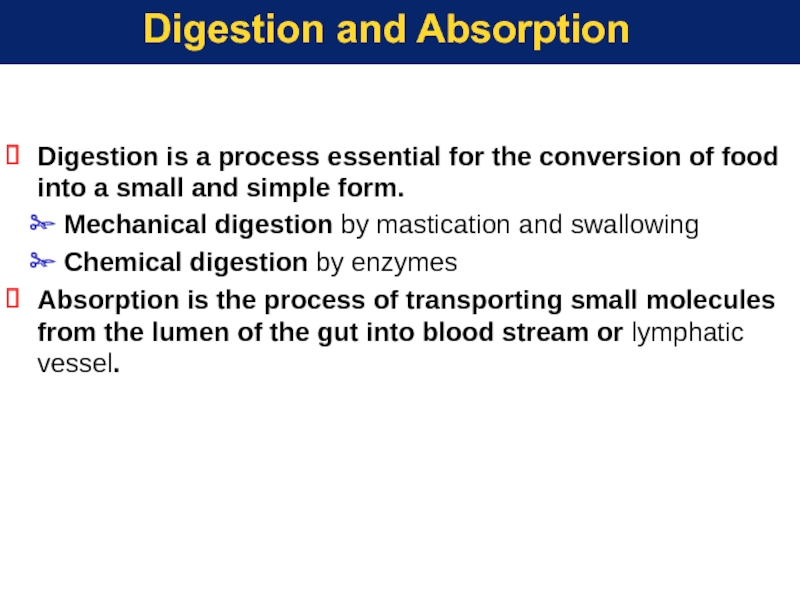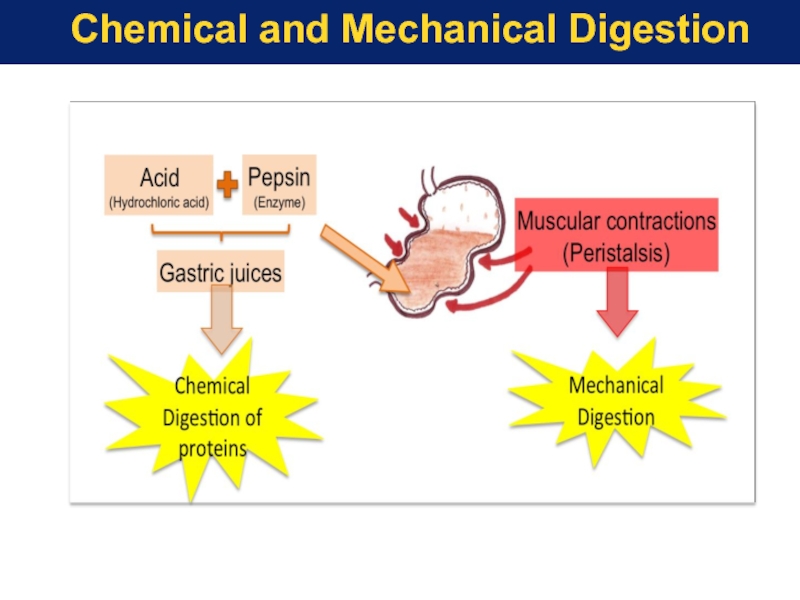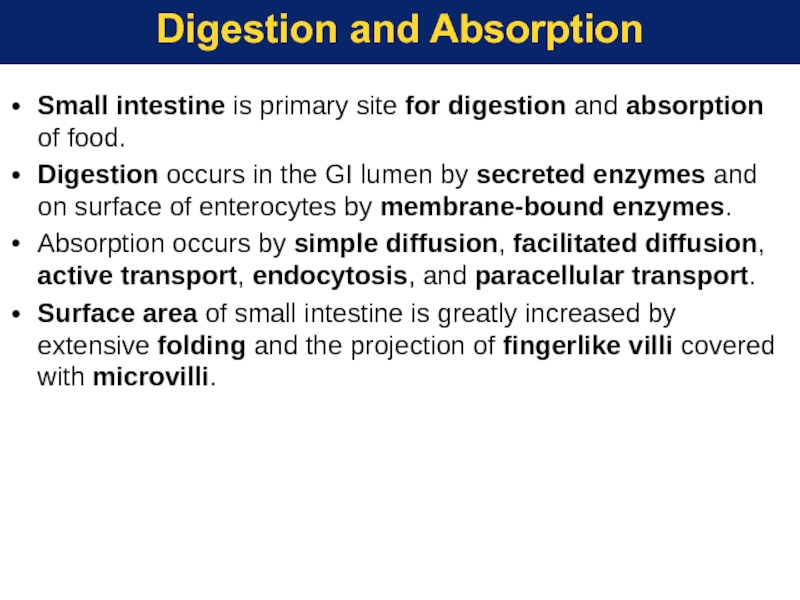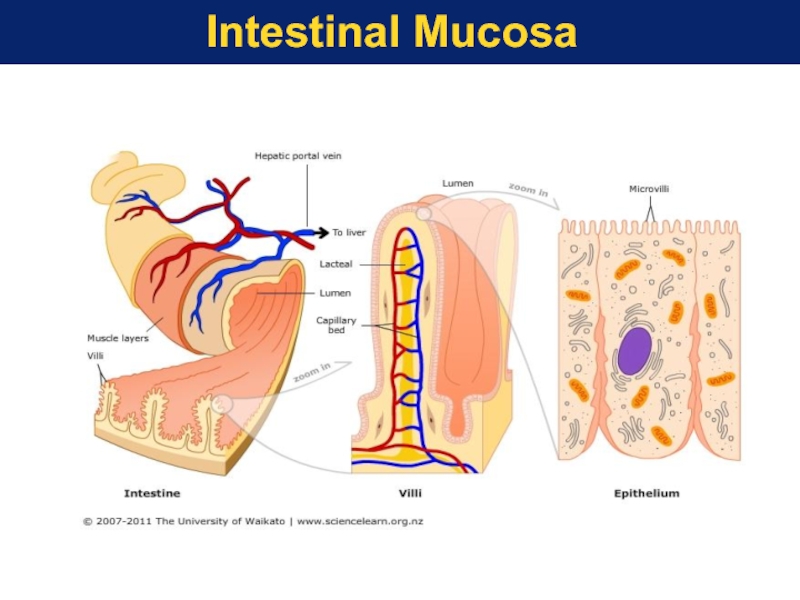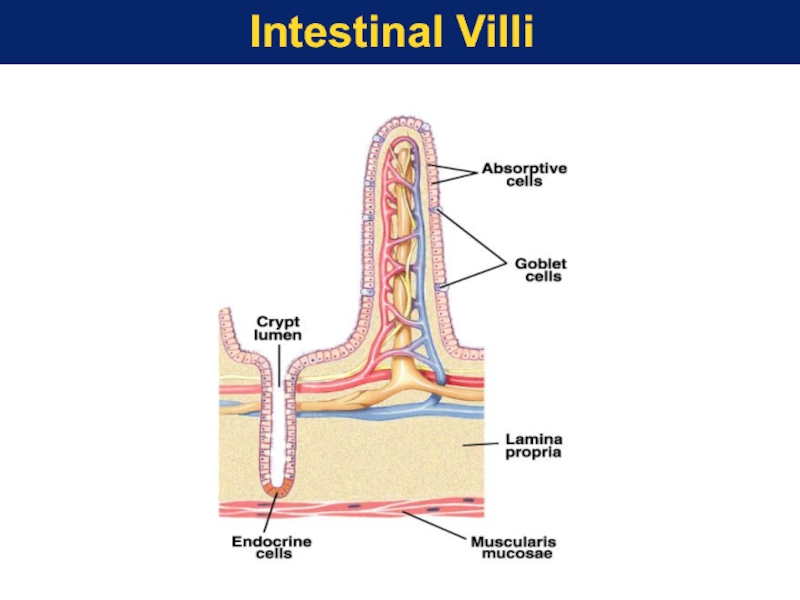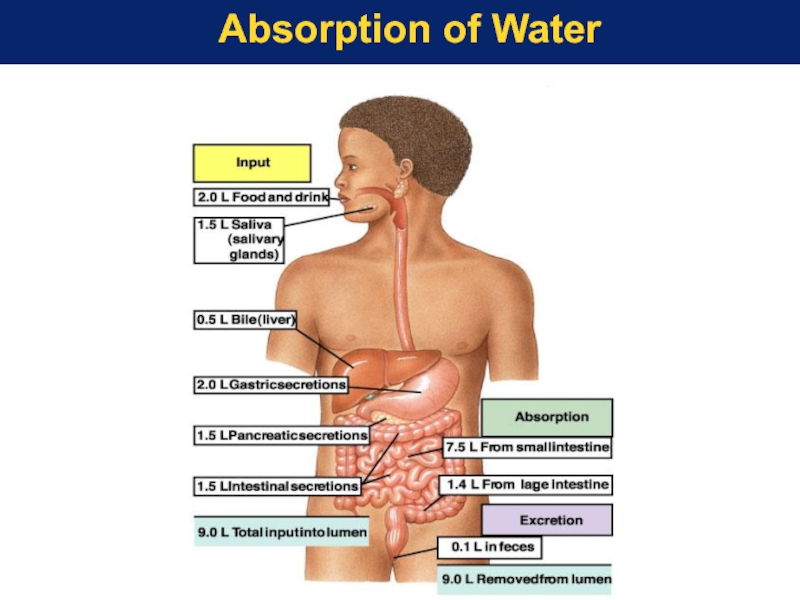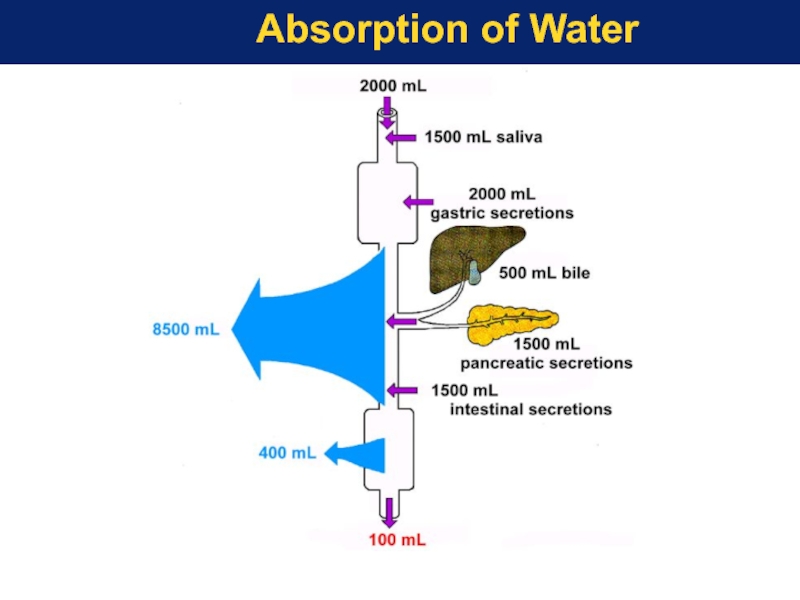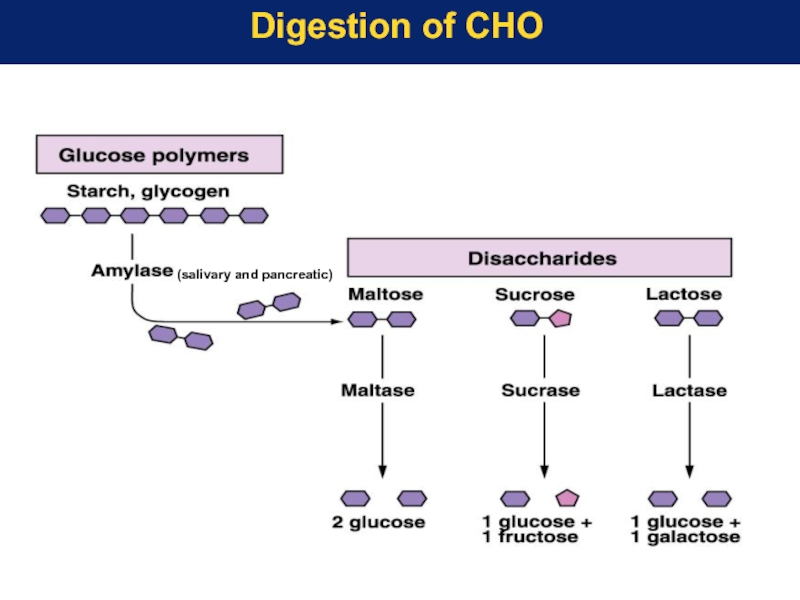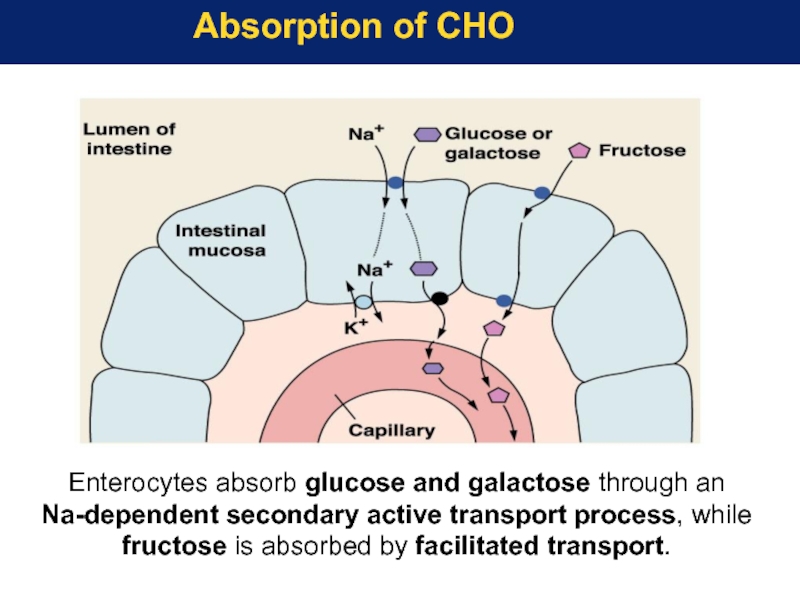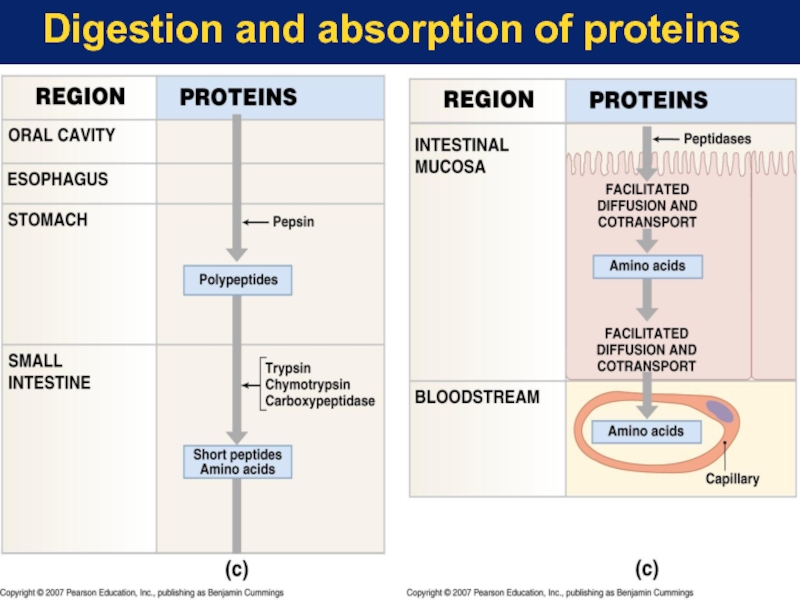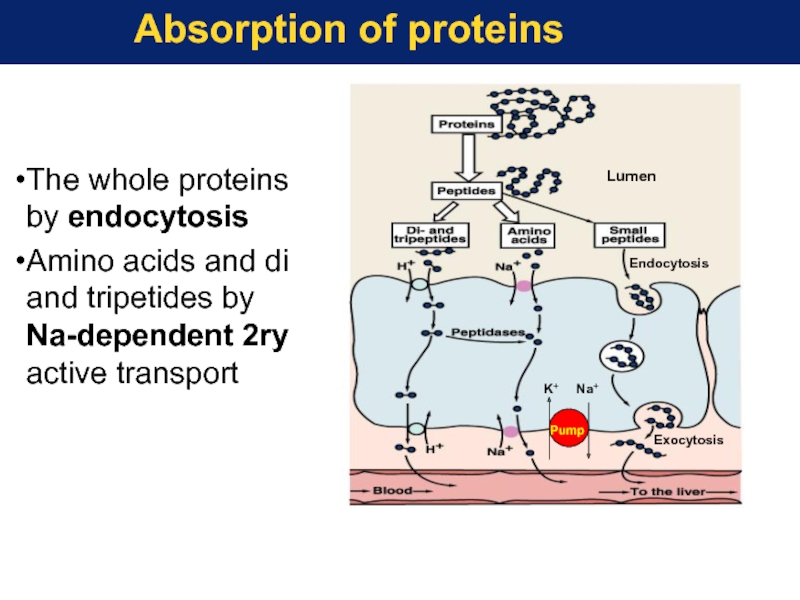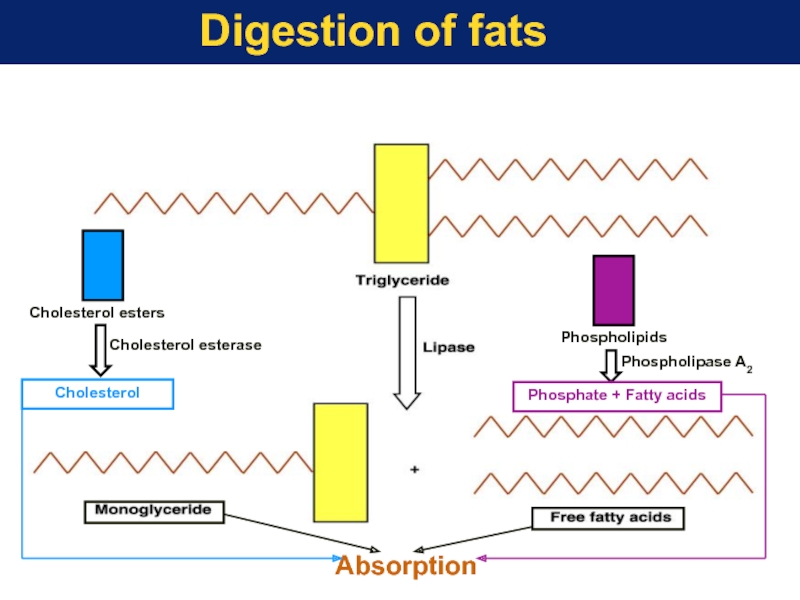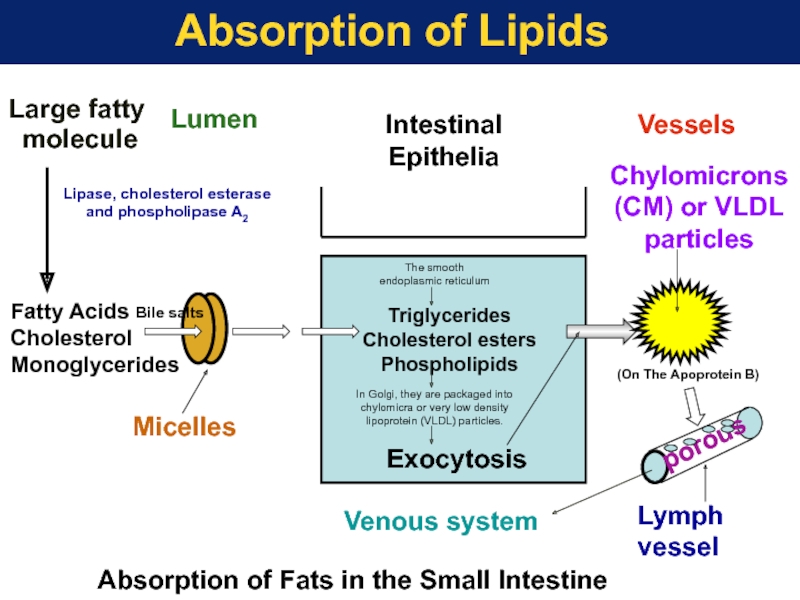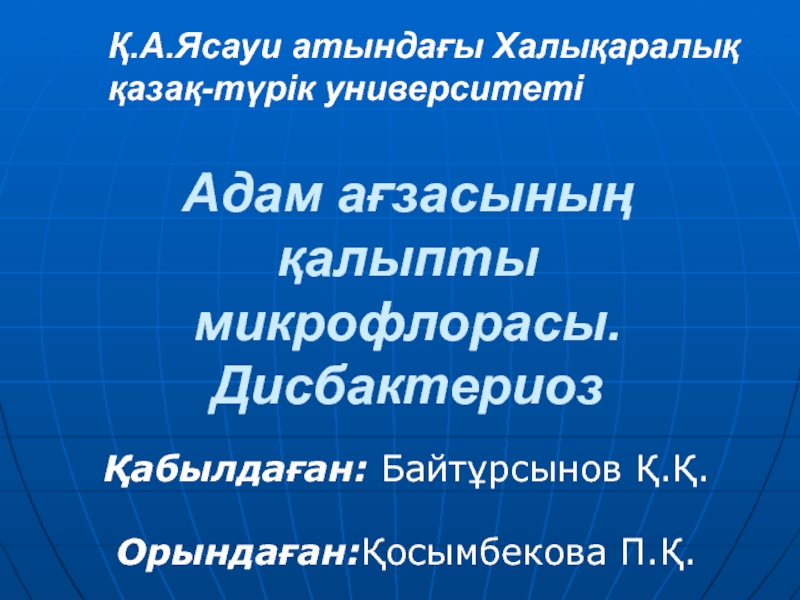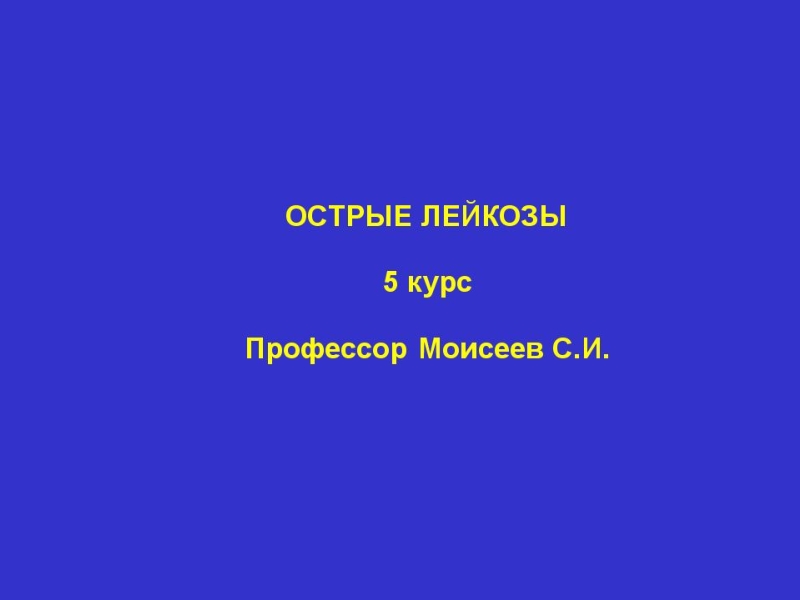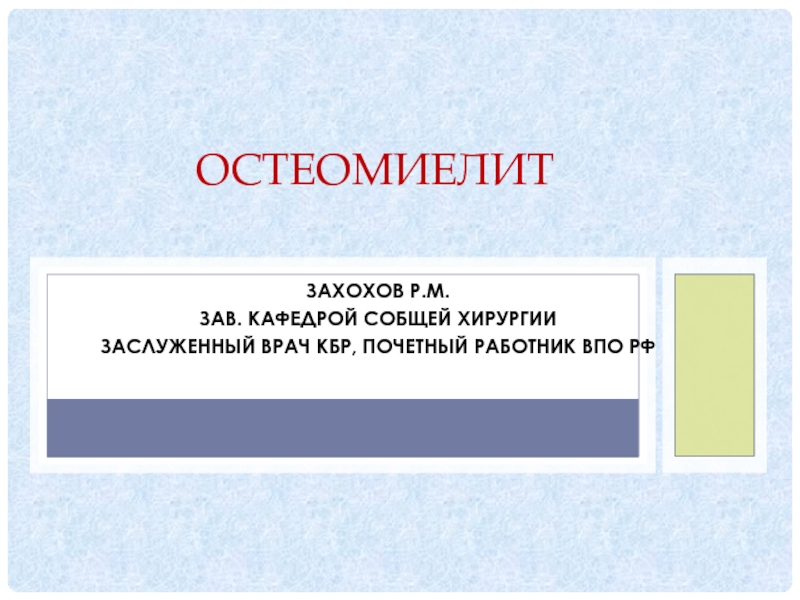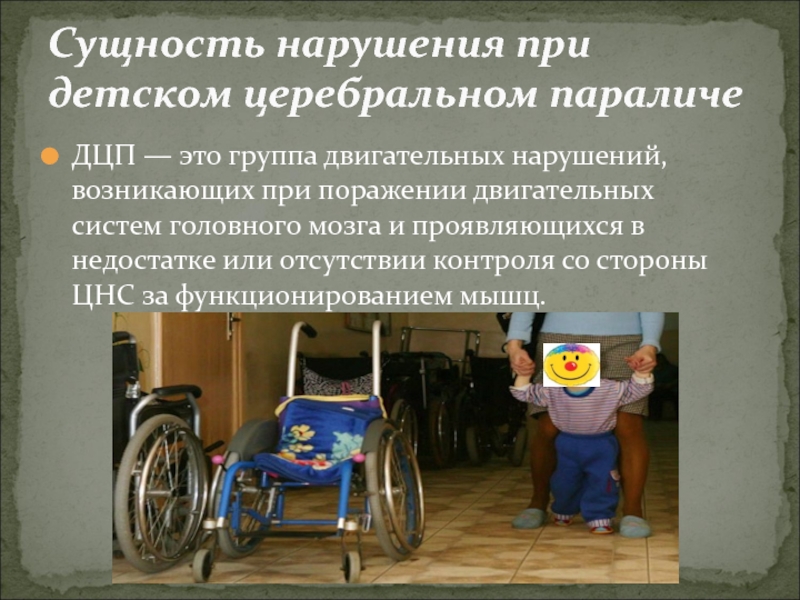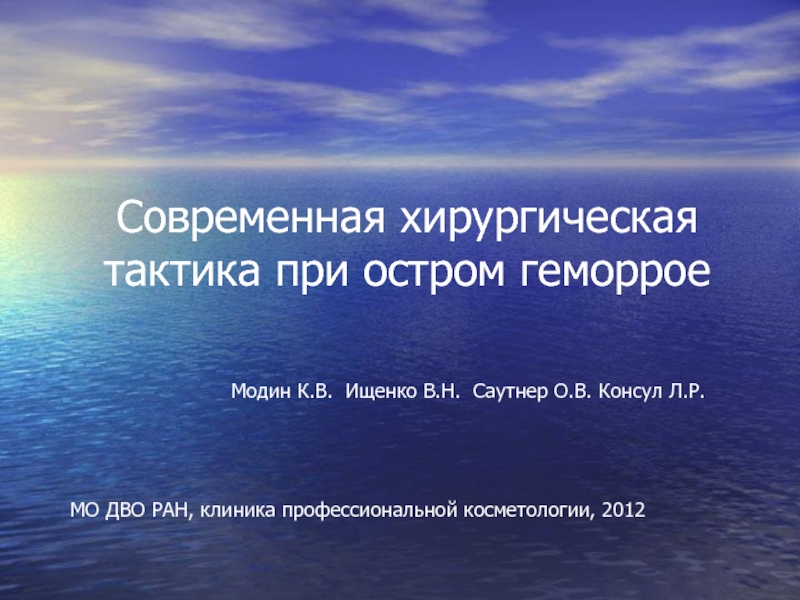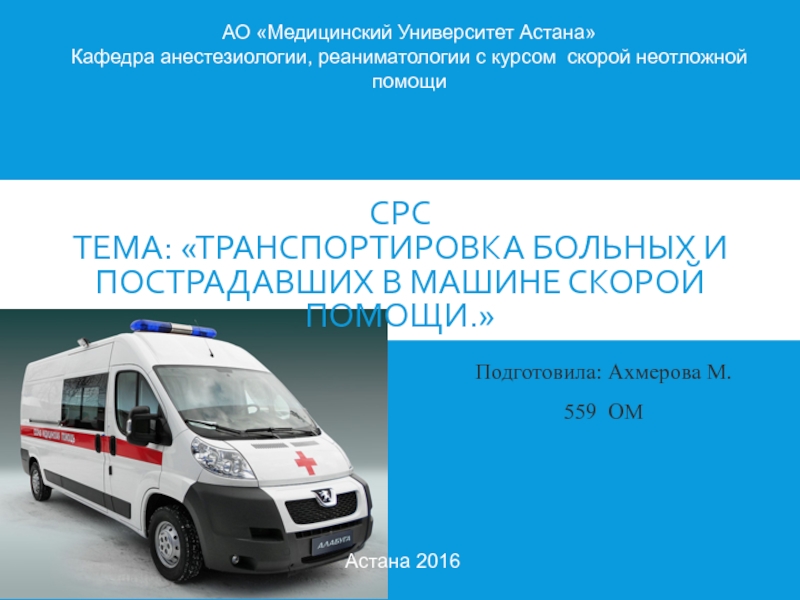- Главная
- Разное
- Дизайн
- Бизнес и предпринимательство
- Аналитика
- Образование
- Развлечения
- Красота и здоровье
- Финансы
- Государство
- Путешествия
- Спорт
- Недвижимость
- Армия
- Графика
- Культурология
- Еда и кулинария
- Лингвистика
- Английский язык
- Астрономия
- Алгебра
- Биология
- География
- Детские презентации
- Информатика
- История
- Литература
- Маркетинг
- Математика
- Медицина
- Менеджмент
- Музыка
- МХК
- Немецкий язык
- ОБЖ
- Обществознание
- Окружающий мир
- Педагогика
- Русский язык
- Технология
- Физика
- Философия
- Химия
- Шаблоны, картинки для презентаций
- Экология
- Экономика
- Юриспруденция
Physiology of digestion and absorption презентация
Содержание
- 1. Physiology of digestion and absorption
- 2. Overview of the Digestive System The
- 3. Overview of the Digestive System
- 4. Overview of the Digestive Tract GIT consists
- 5. Anatomy of wall of GIT
- 6. Main Functions of Digestive Tract 4
- 8. Motor Functions (Motility) of GIT
- 9. Motility of the GIT
- 10. Motility of the GIT b) Swallowing:
- 11. Motility of the GIT b) Swallowing: 2)
- 12. Motility of the GIT b) Swallowing: 3)
- 13. 2. Motility of Esophagus The esophagus is
- 14. 3. Motility of Stomach The stomach consists
- 15. 3. Motility of stomach Gastric peristalsis Motility of GIT
- 16. 4. Motility of Small intestine Types: Two
- 17. Motility of GIT and cutting Segmentation movements
- 18. Peristalsis Motility of GIT
- 19. 5. Motility of Large intestine or colon
- 20. Secretory Functions (Secretions) of GIT
- 21. The total volume of GIT secretions is
- 22. Secretions of GIT in Mouth Salivary Glands
- 23. Regulation of salivary secretion
- 24. GIT secretions in Stomach
- 25. Function of Gastric HCL Activates pepsinogen into
- 27. Pepsinogen Pepsin protein peptone
- 28. Mucus secretion Soluble and insoluble mucus are
- 29. Regulation of Gastric Secretion
- 30. Pancrease
- 31. Pancreas has 2 functions: a) Endocrine functions:
- 32. Starch
- 34. Regulation of pancreatic secretion
- 35. Regulation of pancreatic secretion
- 36. Regulation of pancreatic secretion
- 37. Liver and Gallbladder
- 38. Liver Functions of the Liver: 1) Metabolic
- 39. Secretion from duodenal gland and intestinal gland
- 40. Small intestine Enzymes
- 41. Colonic alkaline secretion to
- 42. Digestion and Absorption
- 43. Digestion is a process essential for the
- 44. Chemical and Mechanical Digestion
- 45. Small intestine is primary site for digestion
- 46. Intestinal Mucosa
- 47. Intestinal Villi
- 48. Absorption of Water
- 49. Absorption of Water
- 50. Digestion of CHO
- 51. Enterocytes absorb glucose and galactose through an
- 52. Digestion and absorption of proteins
- 53. Absorption of proteins The whole proteins
- 54. Digestion of fats
- 55. Absorption of Lipids
- 56. THANKS
Слайд 2Overview of the Digestive System
The Digestive System Consists of ;
Long
it is about 5 meters long
b) Accessory glands: include:
Salivary glands
Liver and gall bladder
Pancreas
Слайд 4Overview of the Digestive Tract
GIT consists of;
Oral cavity or mouth
Pharynx
Esophagus
Stomach
Small
Large intestine
Rectum
Anus
Слайд 6Main Functions of Digestive Tract
4 major activities of GI tract
Motility
Propel ingested food from mouth toward rectum
Secretion of juices e.g. saliva
Aid in digestion and absorption
Digestion
Food broken down into absorbable molecules
Absorption
Nutrients, electrolytes, and water are absorbed or transported from lumen of GIT to blood stream
Слайд 9Motility of the GIT
1. Motility in the mouth
2 types;
Chewing or Mastication:
It is reflex in nature
Significance:
Breaks the food into small pieces to be easily swallowed
Expose food to salivary amylase enzyme, which begins digestion of starch
Help digestion of all types of food especially cellulose containing food e.g. vegetables
Слайд 10Motility of the GIT
b) Swallowing:
Def.
Swallowing is the transport of food
Steps:
It consists of 3 phases or steps;
1) Buccal Phase: food is pushed back into pharynx from mouth
Слайд 11Motility of the GIT
b) Swallowing:
2) Pharyngeal Phase: food pass through pharynx
Слайд 12Motility of the GIT
b) Swallowing:
3) Oesophageal Phase: food pass through esophagus
Слайд 132. Motility of Esophagus
The esophagus is 25 cm ms tube
It is
Upper esophageal sphincter prevents air from entering the GIT
Lower esophageal sphincter prevents gastric contents from re-entering the esophagus from the stomach
Esophageal peristalsis sweeps down the esophagus
Motility of GIT
Слайд 143. Motility of Stomach
The stomach consists of fundus, body and pylorus
Proximal
Distal area (pylorus) has thick wall with strong and frequent peristaltic contractions that mix and propel food into the duodenum.
Also, distal area is responsible for gastric emptying into duodenum
Motility of GIT
Слайд 164. Motility of Small intestine
Types:
Two basic motility patterns exist segmentation and
Significance:
Motility of the small intestine serves 3 functions:
Mixing contents with enzymes and other secretions → help digestion
Maximizing exposure of the contents to membranes of intestinal cells → help absorption and digestion.
3. Propulsion of contents into the large intestine.
Motility of GIT
Слайд 195. Motility of Large intestine or colon
Types:
Include :
a) Segmentation in
b) Mass movement propels the contents of one segment of the large intestine into the next downstream segment.
c) Defecation involves involuntary reflexes and voluntary reflexes → evacuation of colonic content through anal canal
Motility of GIT
Слайд 21The total volume of GIT secretions is about 6-8 L/day
Secretions
GI secretions function to lubricate (water and mucus), protect (mucus), sterilize (HCl), neutralize (HCO3-), and digest (enzymes).
Secretions of GIT
Слайд 22Secretions of GIT in Mouth
Salivary Glands
Three pairs of glands
Parotid
Sublingual
Submandibular
Functions of saliva
Lubricates,
Dissolves chemicals
Suppresses bacterial growth
Digest starch by amylase
Слайд 25Function of Gastric HCL
Activates pepsinogen into pepsins
Provides optimum for pH
Denatures protein denaturation → help its digestion
Kills bacteria in food
Help Fe2+、Ca2+ absorption.
Promotes pancreatic, small intestinal and bile secretion
Слайд 28Mucus secretion
Soluble and insoluble mucus are secreted by cells of the
Soluble mucus mixes with the contents of the stomach and helps to lubricate chyme.
Insoluble mucus forms a protective barrier against the high acidity of the stomach content.
Intrinsic Factor
Help absorption of vitamin B12
Function of mucous and intrinsic factor
Слайд 31Pancreas has 2 functions:
a) Endocrine functions: secretes insulin and glucagon from
b) Exocrine function: secretion of pancreatic juice
It has 2 components: aqueous and enzymatic components.
Aqueous component (contains HCO3) is important for neutralizing stomach acid in the duodenum so pancreatic enzymes can function properly
Enzymatic component is essential for the proper digestion and absorption of carbohydrates, fats, and proteins
Pancreatic enzymes include trypsin, chemotrypsin, lipase, and amylase
Pancreatic Secretion
Слайд 32Starch
pancreatic amylase
pH 7.0
Fat(Triglyceride) Monoglyceride + Fatty acids
Lipase + colipase
pH 8.0
Trypsinogen Trypsin
Enterokinase
Chymotrypsinogen
Chymotrypsin
protein
polypeptide
Carboxypeptidase
amino acid
Functions of pancreatic juice enzymes
Слайд 38Liver
Functions of the Liver:
1) Metabolic regulation
Store absorbed nutrients, vitamins
Release nutrients as
2) Hematological regulation
Plasma protein production
Remove old RBCs
3) Production of bile
Required for fat digestion and absorption
Слайд 39Secretion from duodenal gland and intestinal gland
Secretory volume is 1~3L/day
It contains
enzyme, e.g. enterokinase ,etc
Function:
Protective effect by mucous
Digestion by enzymes such as peptidase, sucrase, lipase
Dilution
Small intestine Secretion
Слайд 41
Colonic alkaline secretion to neutralize acids produced by intestinal
Secretion of mucous for protection, lubrication of fecal matter
Vitamin B and K absorption made from bacterial flora in colon
Secretion of large intestine
Слайд 43Digestion is a process essential for the conversion of food into
✁ Mechanical digestion by mastication and swallowing
✁ Chemical digestion by enzymes
Absorption is the process of transporting small molecules from the lumen of the gut into blood stream or lymphatic vessel.
Digestion and Absorption
Слайд 45Small intestine is primary site for digestion and absorption of food.
Digestion
Absorption occurs by simple diffusion, facilitated diffusion, active transport, endocytosis, and paracellular transport.
Surface area of small intestine is greatly increased by extensive folding and the projection of fingerlike villi covered with microvilli.
Digestion and Absorption
Слайд 51Enterocytes absorb glucose and galactose through an Na-dependent secondary active transport
Absorption of CHO
